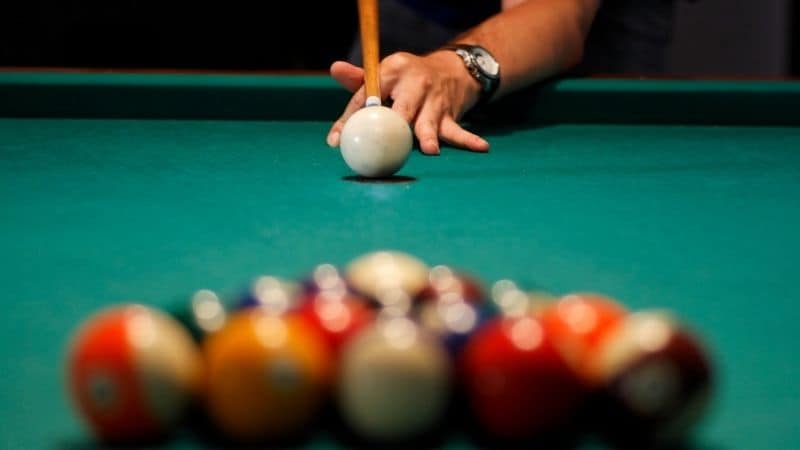9 Ball Pool is a challenging billiards game in of itself, but you’d be surprised how much easier you can make the game for yourself with a solid breaking shot and strategy. That being said, if you’re new to 9 Ball Pool or billiards games in general, you might be wondering where to start when it comes to breaking.
This article will list five tips to breaking better in 9 Ball Pool by covering strategy, specific types of shots, and optimal ball placement. By utilizing these tips and practicing each significantly, you should find your 9 Ball Pool breaks significantly improved, giving you an edge in any official game.
Ensure You Have a Tight Rack and Recognize Debilitating Gaps
Many pool players think that the first thing they should learn when breaking properly is their form, aim, and power. While these fundamentals are important, you could have perfect form and technique and find your shot has gone askew because you skipped this essential step.
Before attempting any break shot in 9 Ball Pool, it is essential you have a tight rack devoid of debilitating gaps. Balls within the rack should have contact with neighboring balls without any clear spaces between them.
Gaps can have a significant effect on your break shot, particularly your ability to pocket the wing ball you should ideally be targeting. To pocket this ball successfully every time, there can’t be any gaps in the “L path.” If there are gaps, the ball in the second row of the path won’t move quickly enough, resulting in the wing ball going high.
Since pocketing the wing ball can be imperative to your chances of winning, you should always analyze the rack for gaps and request a re-rack if you notice any gaps in the “L path” are present.
Break From the Side with a Square Hit to Make the Wing Ball
Unless you’re participating in a tournament where players are forced to break from “the box,” you’ll almost exclusively find that professionals playing 9 Ball Pool break from the side, and there’s a reason for this.
Breaking from the side when playing 9 Ball Pool gives the breaker the best chance of pocketing a wing ball while also placing the one ball in optimal position for the next shot. If the player is advanced enough, this position also allows them to execute the “Golden Break,” where they can pocket the one and the nine in the same shot.
While breaking from the center is an option in 9 Ball Pool, it isn’t typically the favorable choice since shooting from here and hitting the 1 ball squarely will throw both wing balls into the corners rather than pocketing them.
Ideally, the breaker should place the cue ball as close to the headstring as possible and about a ball’s width from the rail. From this position, shoot with a square hit to pocket the wing ball on the breaker’s side, drive the 1 ball towards the upper corner, and maintain optimal cue ball control.
If you are playing a game with three-point rules, you’ll want to add a significant amount of speed to your shot to drive more balls above the headstring.
Target the 1 Ball on the Break
After you’ve practice shooting from the side enough and you’re pocketing the wing ball consistently, you can start to move your focus towards making the 1 ball on the break.
When playing 9 Ball Pool, the breaker must always hit the 1 ball for a legal break. However, pocketing the 1 ball off the break will give the breaker a significant leg-up in the game, especially if they’re capable of pocketing a wing ball simultaneously.
To pocket the 1 ball on the break, you’ll use the same positioning described in the previous tip but use a different shot. Instead of using a square hit, you need to use a cut break, aiming more to the right so you don’t hit the one fully.
If you are successful, not only will you drive the wing ball on the breaker’s side into the pocket, but you should also pocket the one ball in the opposite side pocket as well.
You’ll want to practice this shot significantly, as it can throw the breaker some significant curveballs in terms of the 2 ball’s position after the shot. There is also a significant risk of scratching with this shot which you’ll want to avoid for obvious penalty reasons.
Apply Slight Top Spin to Strategically Squat the Cue Ball
Another tip you might want to adapt for your 9 Ball Pool break technique is referred to as “squatting the rock.” This essentially means the cue ball doesn’t roll or move too far from the broken rack.
To squat the cue ball successfully, you’ll still want to break from the side, but you’ll want to apply a slight topspin to the cue ball. To do this, you’ll want to hit the cue ball towards the top of the ball.
Applying a slight top spin to your cue ball will significantly reduce the odds of scratching off the break and help the breaker set up their next shot more easily if they correctly followed all of the other techniques listed previously.
Practice a Soft Break for a More Beginner Friendly Break
While soft breaks are considered beneficial if you are playing a game of 9 Ball Pool that follows the three-point rules, it can do a great deal for beginners who are trying to focus on pocketing the wing ball and having proper 1 ball placement.
To perform a soft break, you would follow all of the techniques listed in the tip for making the 1 ball, but you would apply significantly less speed to the ball. As a result, you should still be able to pocket the wing ball and squat the cue ball.
By utilizing this break, a beginner should find there is less spin to contend with, and there is better placement of the 1 ball they can sink into any of the pockets on the opposite side of the table. However, as we said before, if you are playing by three-point rules, you won’t have enough speed to drive enough balls above the headstring. Therefore, this approach might be best left to practice.

